“The power of Open Source is the power of the people. The people rule.” ~ Philippe Kahn
And, when you combine it with project management, you get an open-source project management solution that offers a flurry of features with customization, full data control, and flexibility.
However, if you’re new, it’s best to go with a more traditional project management solution as they are easy to use and don’t require technical expertise to manage servers. If you’re a newbie, I suggest checking SaaS project management software.
In this article, I’ll go through 9 open-source project management software in detail, with their features and limitations, supported installations, and capabilities to give a clear view of which one suits your needs better.
- 1. OpenProject
- 2. FocalBoard
- 3. ERPNext
- 4. Orangescrum
- 5. Taiga
- 6. Redmine
- 7. Odoo Project Management
- 8. Leantime
- 9. Plane
- Show less
I have also included 3 additional tools that deserve honorable mentions.
Open-Source Project Management Software Comparison Table
Below is a comparison table of the top open-source project management tools based on whether they support Kanban boards, Gantt charts, integrations offered, and deployment options.
 | 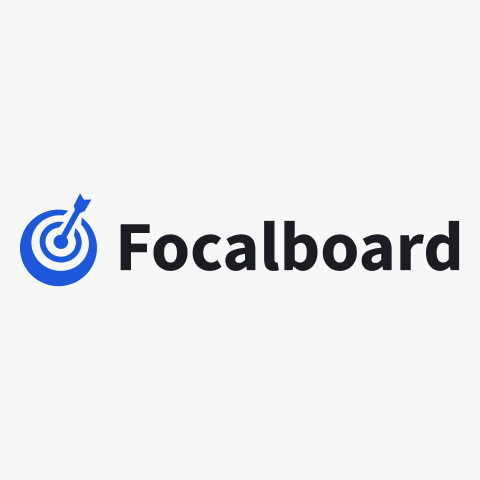 |  | 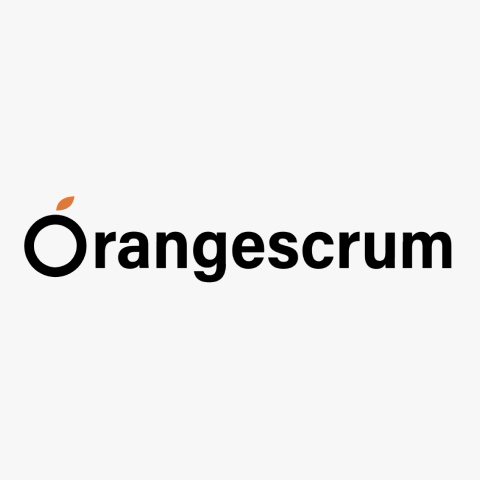 | 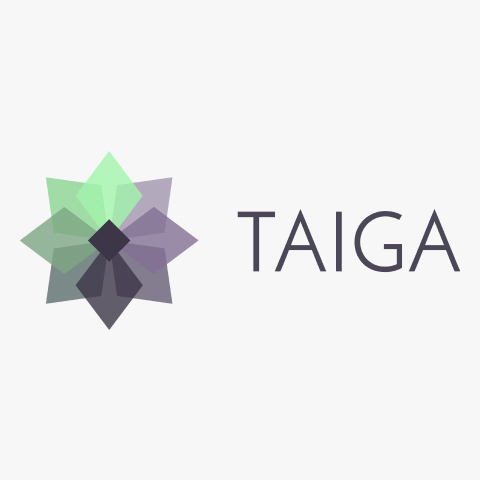 | 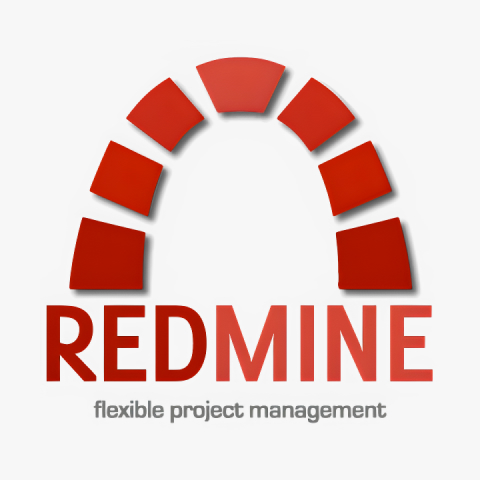 | 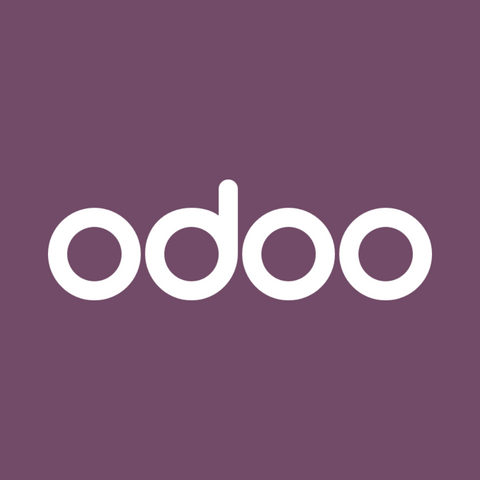 | 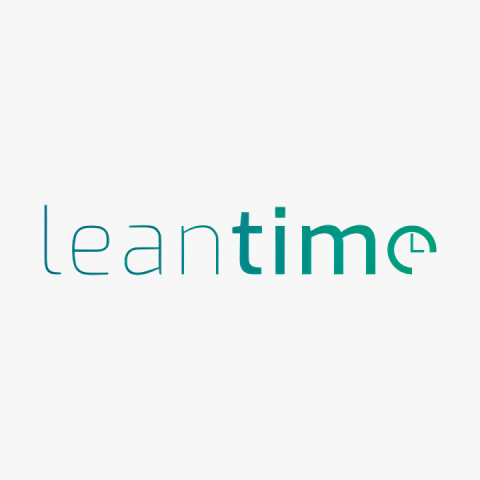 | 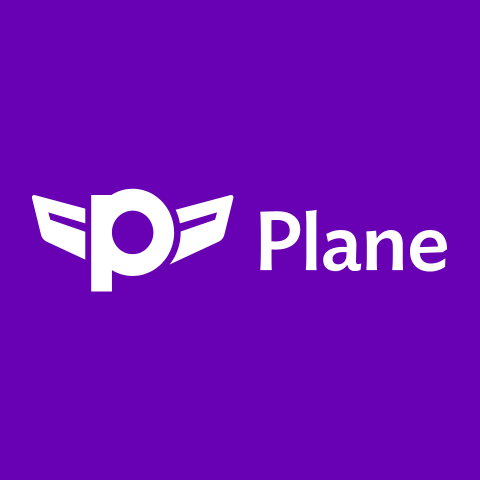 | |
✅ | ✅ | ✅ | ✅ | ✅ | ❌ | ✅ | ✅ | ✅ | |
✅ | ❌ | ✅ | ✅ | ✅ | ✅ | ✅ | ✅ | ✅ | |
Gantt, Kanban, Task lists | Table, Gallery, Calendar, Kanban | Calendar, Kanban, Gantt | Time log, Kanban, Gantt | No | Calendar, Gantt | List, Kanban, Form, Calendar | Lists, Kanban, Gantt | List, Kanban and Calendar | |
One Drive, GitHub, NextCloud | Asana, Trello, Notion | e-Commerce, payment gateways, backups | SSO, Slack, OneDrive, GitHub | GitHub, GitLab, Slack | Sentry, Testmo, GitHub | Mail Plugin, GeoLocation, Cloudflare Turnstile | Trello, Google Forms, Slack, GitHub | Solack, GitHub Sync | |
Cloud, on-premise and self-hosting | Desktop, on-premise and self-hosting | On-premise, cloud and hosted solution | On-premise, private cloud, hybrid | Cloud, on-premise, self-hosted | On-premise, Cloud | Online, On-premise | Cloud, on-premise, self-hosted | Cloud, on-premise | |
I will now discuss the above open-source project management tools in detail.
1. OpenProject
OpenProject is a top open-source project management software, available under the GNU General Public License v3.
Managers can fully control their project with access to key project management features such as the Gantt chart, Kanban view, team management, work packages, and much more, ensuring complete end-to-end project management.
OpenProject cloud offering comes with a 14-day free trial.
Once signed up, I found their onboarding useful as they explained every feature to get started. If you feel stuck, you can use OpenProject’s detailed wiki for a smooth setup and operations.
OpenProject supports classic, agile, and hybrid project management. For example, teams can use Kanban and Gantt to visualize and plan their project.
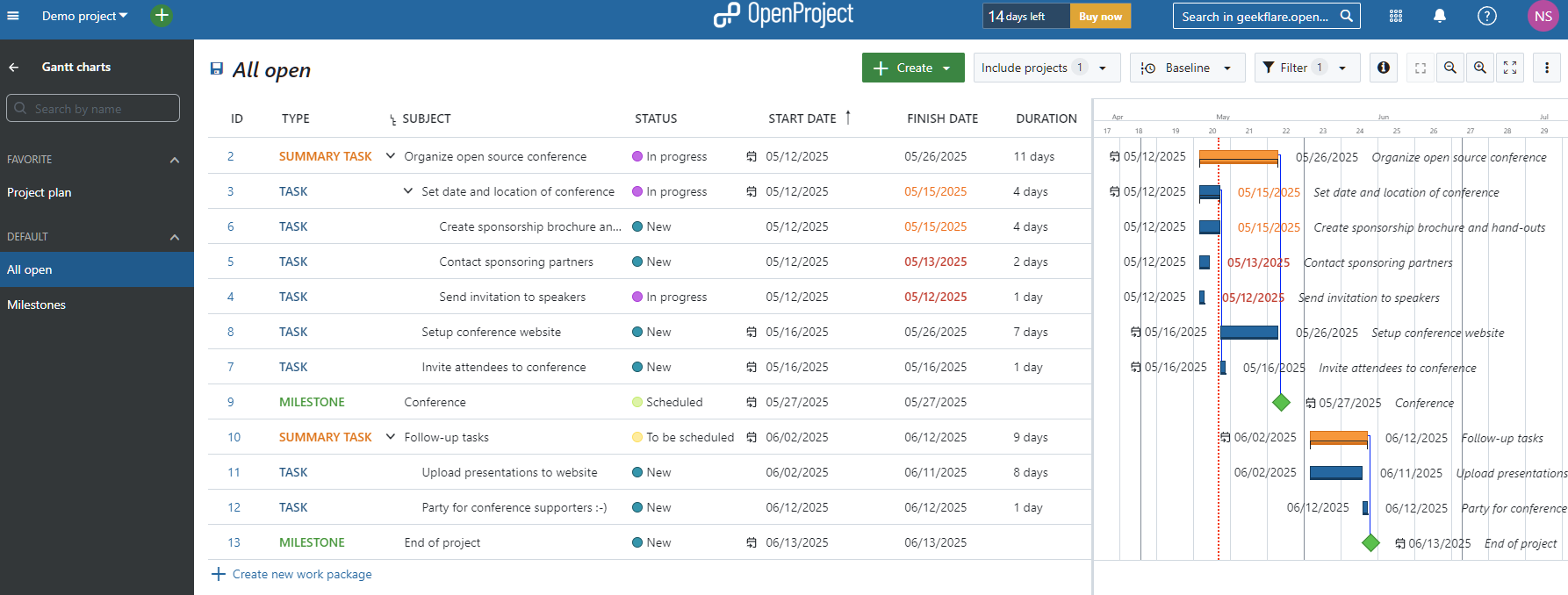
OpenProject is fast as it uses Ruby on Rails technology. To handle workload, it uses the workers concept, where each worker handles different tasks, be it HTTP requests or offloading tasks. By default, you get 4 web workers, which can be increased based on project requirements.
As an admin, you can install OpenProject community edition in different ways:
- Use DEB/RPM packages
- Install with Kubernetes
- Use a Docker container for installation
- Use OpenProject Helm charts
OpenProject limitations:
- Limited phone support
- Gantt chart doesn’t support drag and drop
- Users complain about its lack of flexibility and the hard installation steps
OpenProject Pricing
OpenProject cloud plans pricing starts at $7.25 per user per month. The Basic plan has 25 minimum users and comes with community features and all enterprise add-ons. Additionally, you will get basic email support.
As it is open-source, you also get the community edition for free. However, it is up to you to install and manage, which requires technical expertise.
2. FocalBoard
FocalBoard is a self-hosted project management software and a great alternative to Notion, Asana, and Trello.
Like OpenProject, FocalBoard is a popular project with 23.4K stars on GitHub.
I found FocalBoard a great option for project management because it can be used as a personal desktop application (available on macOS, Windows, or Linux), which is great for single users, while the personal server option offers multi-user support.
FocalBoard offers interesting features, including:
- Plenty of useful templates such as Meeting Agenda, Personal Goals, Competitive Analysis, etc.
- A user-friendly UI with color-coded elements for easier navigation.
- Drag-and-drop functionality, like Trello.
- Support for Kanban, making it ready for agile projects
- Ability to add filters for easy classification
- Support for 17 languages including English, Dutch, Portuguese, and others
- Import from Trello, Asana, Notion, Jira and Todolist
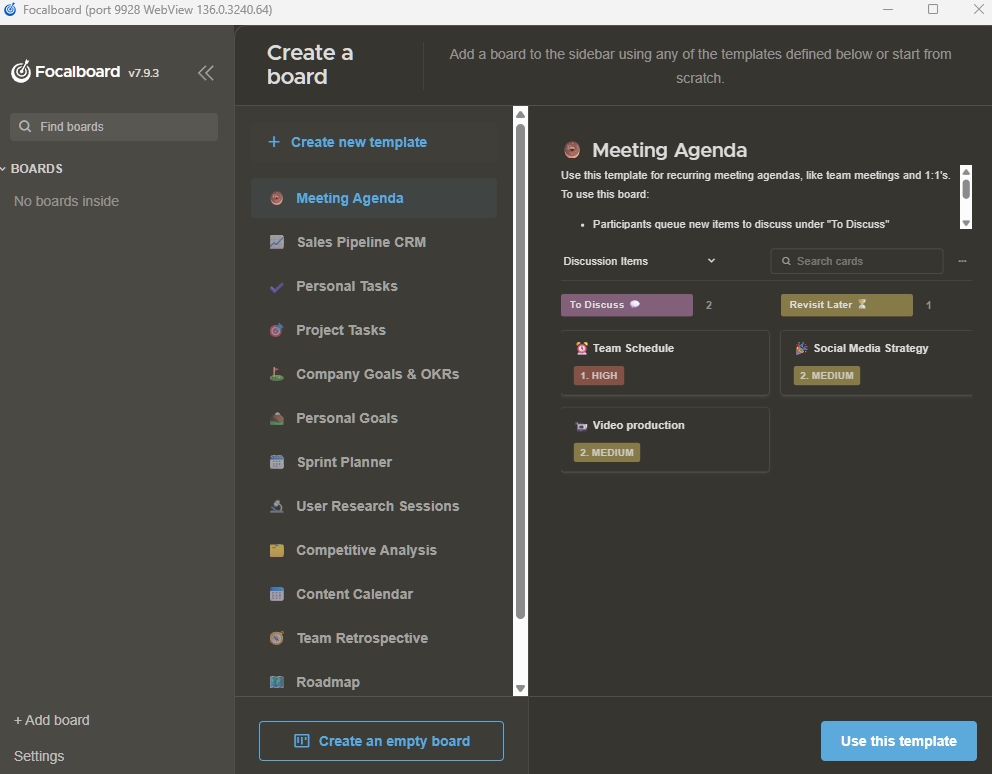
Additionally, Focalboard supports list, calendar, and gallery views as best as possible. Like Trello or Notion, Focalboard supports real-time collaboration and @ tag to catch your teammates’ attention. It also offersh unlimited board creation, customizable templates, and file sharing.
FocalBoard limitations
- Limited integration options
- Slow or uncertain development path. For example, currently at the time of writing, FocalBoard doesn’t have any active maintainers. This makes other projects more lucrative, such as Vikunja.

Focalboard Pricing
Focalboard is open-source under the Apache License v2.0. They don’t have any paid plans available, even for their server offering.
3. ERPNext
ERPNext is an enterprise-ready project management solution with the goal of offering more flexibility and people than proprietary ERPs.
With 25K stars and active maintainers, ERPNext is one of the best open-source project management software. ERPNext is highly customizable as it gives full control to the user.
ERPNext comes with all the features that you would desire for end-to-end project management. These include:
- Accounting tools that record transactions, summarize them, and analyze financial reports.
- An asset management tool to manage assets across the organization
- Manufacturing tools for handling the production cycle with high accuracy
- Order management to manage inventory levels from stocking to order fulfillment.
- Project tools for handling both internal and external projects.
ERPNext supports on-premise and cloud. Their cloud offering comes with a 14-day free trial without any credit card requirement.
So, I went forward and registered for its free trial and noticed the following:
- It supports widgets, which you can add and remove.
- Project dashboard showcases work packages and milestone updates.
- Team planner lets you plan team activities over a period of time.
- Supports Gantt chart
- Offers tons of modules, including accounting, stock, manufacturing, point of sale, etc.
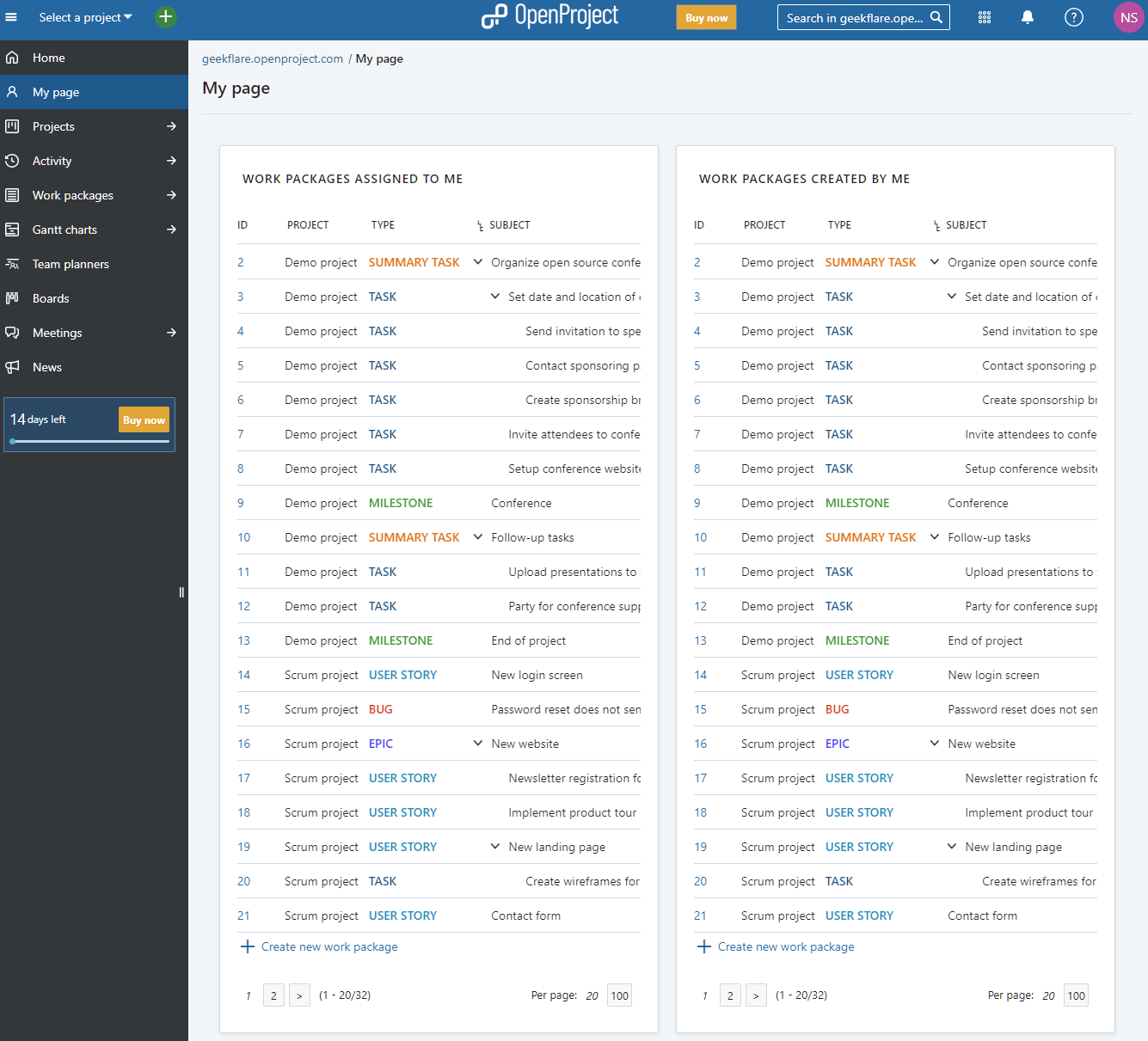
ERPNext Limitations:
- ERPNext is relatively new, making it hard for companies to trust it.
- Large industries may find ERPNext’s scalability unfavorable
- Documentation still needs a lot of work
- Not ideal for every industry out there
- Steep learning curve
EPRNext Pricing
ERPNext supports hosting on Frappe Cloud. For small businesses, it starts at 5$ per month, whereas for mid to large enterprises, the price starts at $200 per month.
4. Orangescrum
Orangescrum is an open-source project management tool that collaborates with real-time projects. It supports cloud and self-hosted cloud deployment methodologies with access to Gantt chart, Kanban View, task templates, and much more.
During my testing, I found Oragnescrum to offer:
- Excellent onboarding that explains key aspects of Orangescrum, such as projects, aligning resources, managing work, and time & resource management.
- Make insightful designs via reports such as timesheet, hours spent, and profitability.
- Offers smart filters such as task type, status, and labels to get access to what you want.
- Offers time tracking capabilities for the team to ensure productivity and billing purposes. Additionally, it comes with resource availability for easy planning.
- Provides a calendar and Kanban view.
That’s how the Orangescrum dashboard looks:
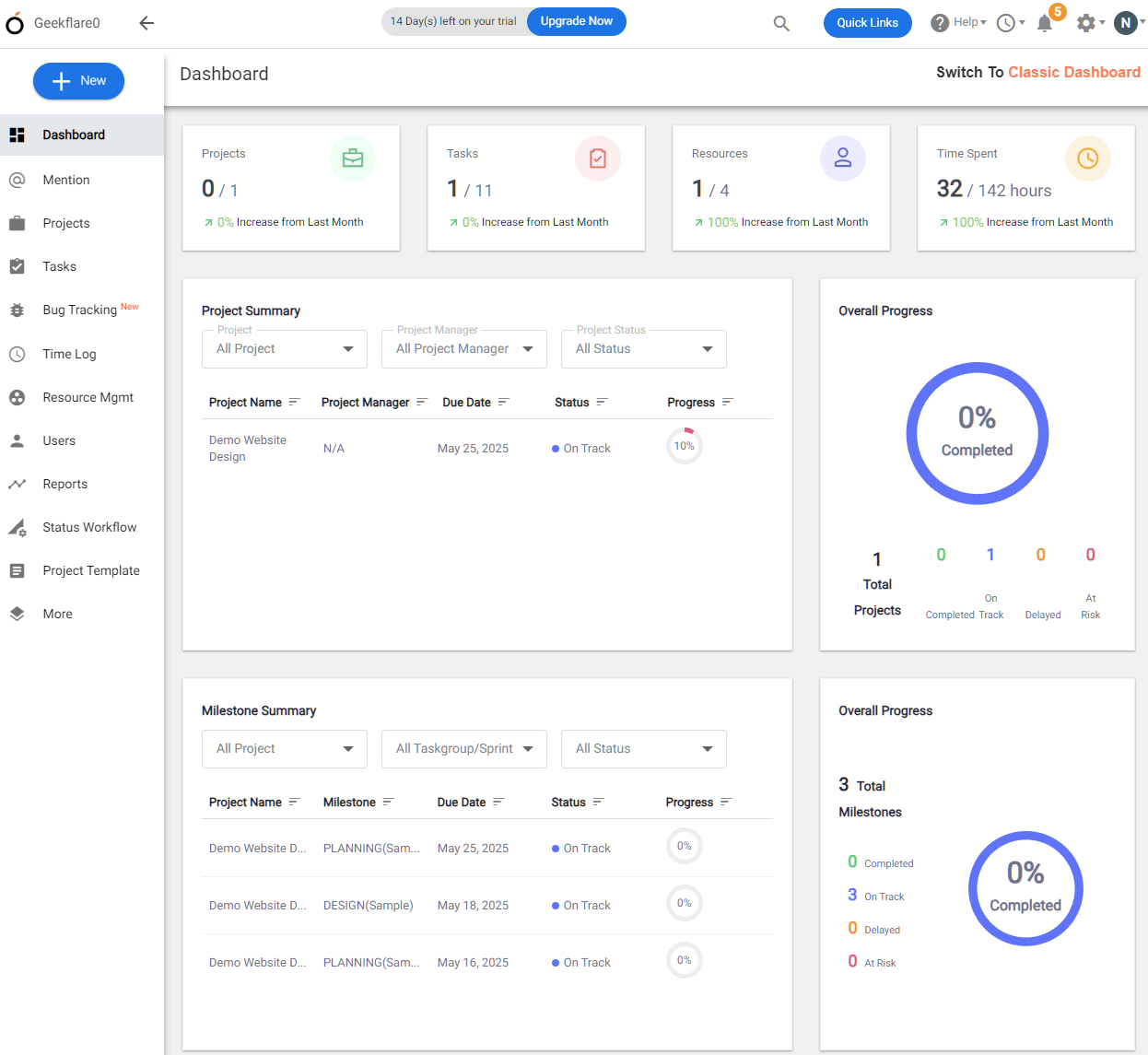
Orangescrum limitations:
- Lack of active development as seen via its GitHub repository.
- Too many features can overwhelm small teams
- Steep learning curve
Orangescrum pricing
Orangescrum plans start at $7.99 per user/month. They offer a free forever plan for 1 user with a smaller requirement.
You can try Orangescrum’s paid version with its 15-day free trial.
5. Taiga
Taiga is a free-to-use open-source project management tool. It offers a rich set of features with a focus on the intuitive user interface. With Taiga, you can plan, communicate properly, and improve the team’s potential with data-backed insights.
Unlike Orangescrum, Taiga has an active GitHub repository with 1.6K stars.
Taiga offers a free basic cloud version that offers unlimited users and projects.
I instantly noticed the following about Taiga:
- UI/UX is clean to improve workflow and provide ease of use
- You can create projects in Scrum or Kanban style
- Tasks can be created via a new user story.
- Each task supports attachments and point allotment, which determines the task size.
- Drag and drop user stories across Kanban columns
- Supports integrations via webhooks
- Supports GitHub, GitLab, BitBucket and Gogs for seamless development
- Set proper permissions for different categories such as UX, Front, Back, Stakeholder, etc.
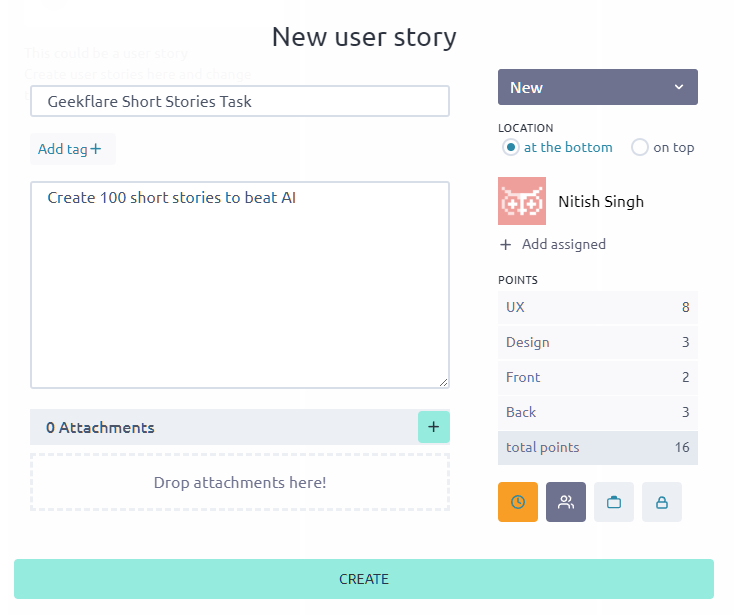
Additionally, you can also set permissions for each role type as shown below:
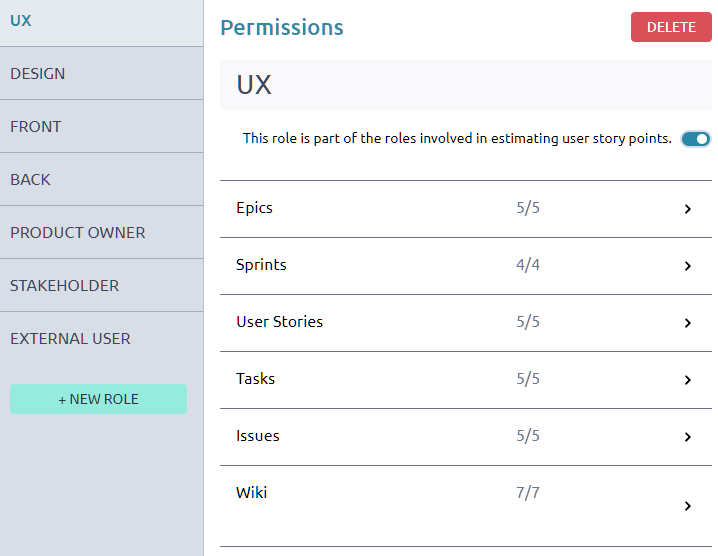
Taiga Limitations:
- Has a steep learning curve to it
- Non-standard terminology
- Free version has multiple restrictions
Taiga Pricing
Taiga offers cloud hosting with premium support at 70€. You can also self-host or do on-premise hosting.
6. Redmine
Redmine is a web-based project management solution. It is free to use as it is open source and available under the GNU GPL v2.
Under the hood, Redmine uses Ruby on Rails, which provides excellent performance even for complex projects.
As Redmine is free, you can download it and install it on your system. It supports Linux, macOS, Unix, and Windows systems.
However, you can try it out via its demo site (which is not directly associated with Redmine).
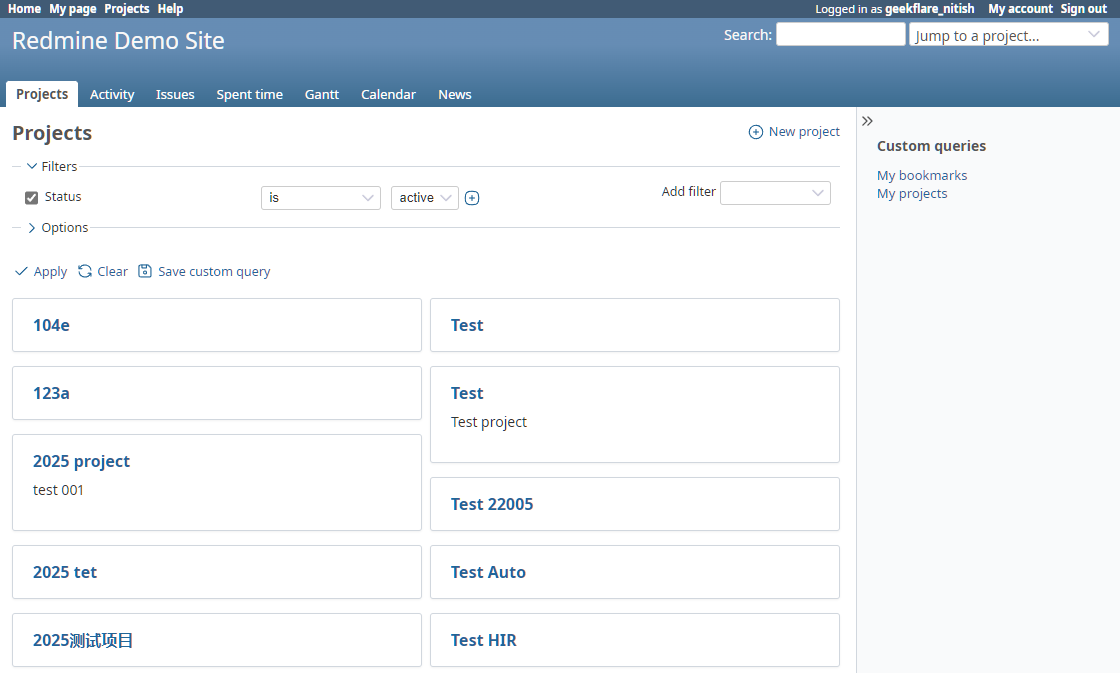
When playing with the software, I found the following interesting things about it:
- It offers project filters to quickly show what you’re looking for
- Capable of running multiple projects simultaneously
- Have an activity tab that shows all actions taken by team members
- Issues are listed in a clean manner, showcasing status, priority, updated, and more.
- Keep track of the time spent on each project
- Keep a tab on the project’s progress via the Gantt chart
- Manage the project via calendar view
Redmine limitations:
- Not user-friendly and requires a lot of patience to use effectively
- Needs technical expertise to install the backend before you can use Redmine
- Depends heavily on add-ons and integrations for more features
In short, Redmine excels as a core project management solution and opens the door for customization with its vast library of addons and integrations.
Redmine Pricing
Redmine is completely free to use.
7. Odoo Project Management
Odoo Project Management is one of the most popular open-source solutions for managing your project. It is completely free with no limitations whatsoever.
With 43K GitHub stars, Odoo is actively developed as it offers a suite of Odoo apps, including CRM, website builder, eCommerce solution, and more.
It offers a free trial with no credit card. During testing, I noticed the following:
- Clean dashboard with focus on usability
- Guided onboarding
- Fully customizable Kanban board with examples for inspiration
- Clean and useful dashboard
- Offers task analysis and burndown chart
- Provides comprehensive settings for the project including permission settings, integrations, and more.
- Task template support for faster workflow
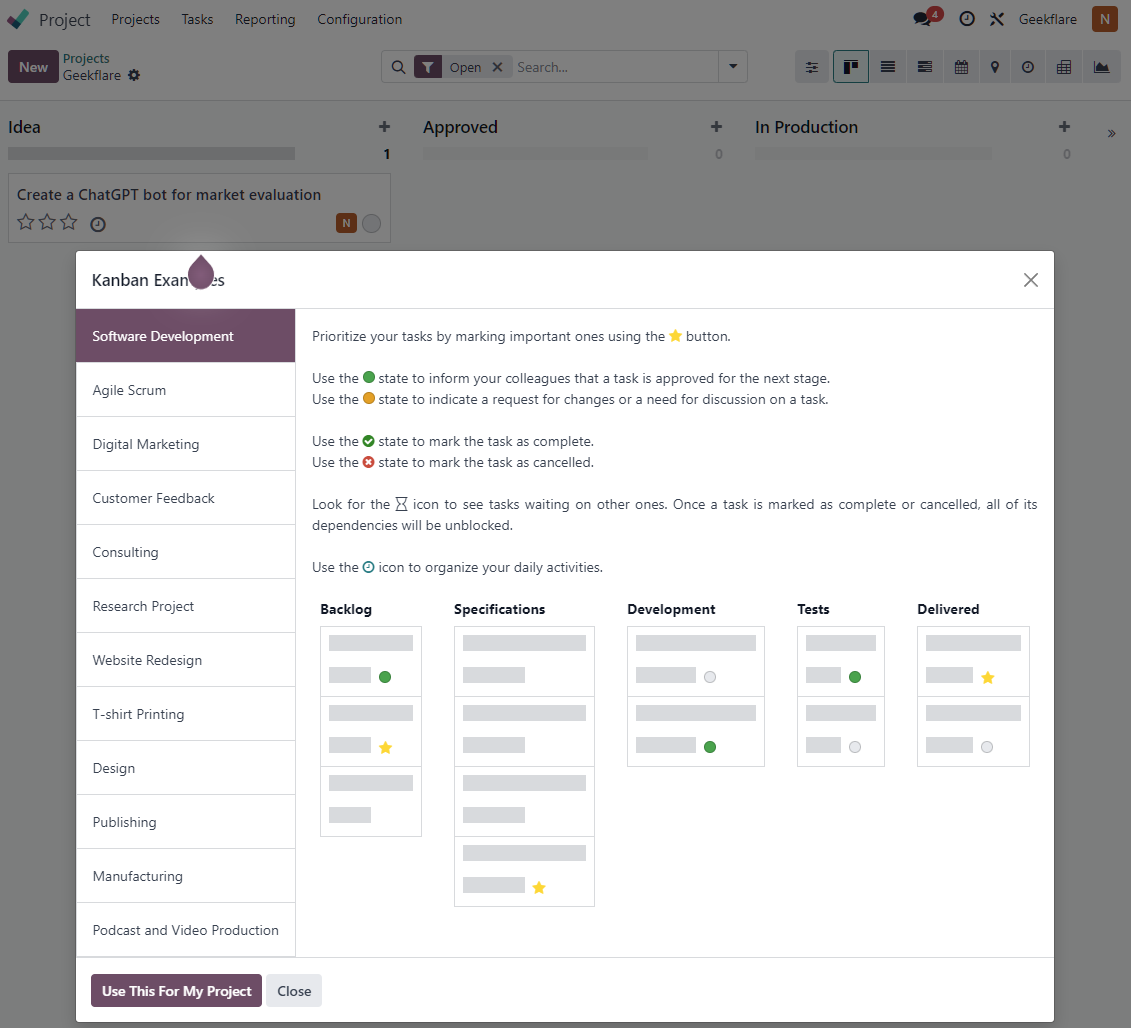
Odoo is developer-friendly as well, giving organizations with custom requirements full freedom to customize or build modules as per their needs.
Odoo limitations:
- Steep learning curve
- Setup can be complex, especially when working with multiple modules
- The free cloud version only supports one module use
Overall, Odoo offers an excellent way to manage tasks. You can create unlimited projects with unlimited tasks. Its timesheet module is useful for tracking time spent and optimizing the workflow. Additionally, Odoo’s vast ecosystem enables businesses to create a centralized approach rather than depending on multiple ones.
Odoo Pricing
Odoo price starts at $24.90 per user per month. The free version supports unlimited users, but only with Odoo online.
8. Leantime
Leantime is an excellent pick for project management. It offers customizable tools that help you tackle tasks smartly, especially aimed at differently abled professionals such as those with dyslexia, ADHD, and Autism.
Leantime is available under the AGPL-3.0 license (5.4K stars on GitHub). However, not all features are available in the open-source version, such as the AI To Do priority.
As Leantime focuses on usability, it lets you determine a visual experience. Once signed up, you can choose a busier dashboard or a less busy one. It also lets you change readability, select a theme, and set times for proper breaks and work time.
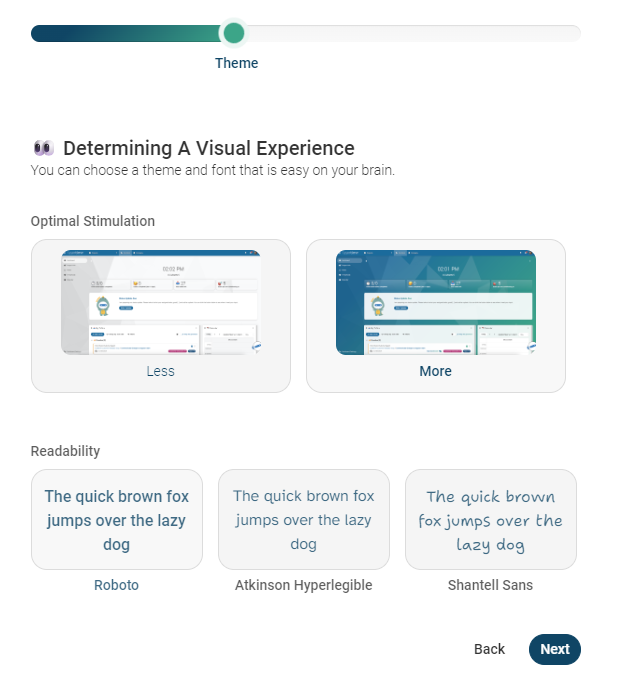
So, what else makes Leantime different? It does so by following:
- Help customize the workflow as per the individual’s needs
- Comes with Personal Command Center, which helps you stay organized
- Offers different sections covering different needs, like Data Room to store files, Make to manage goals, and Think to strategize.
- Checklist to keep track of progress
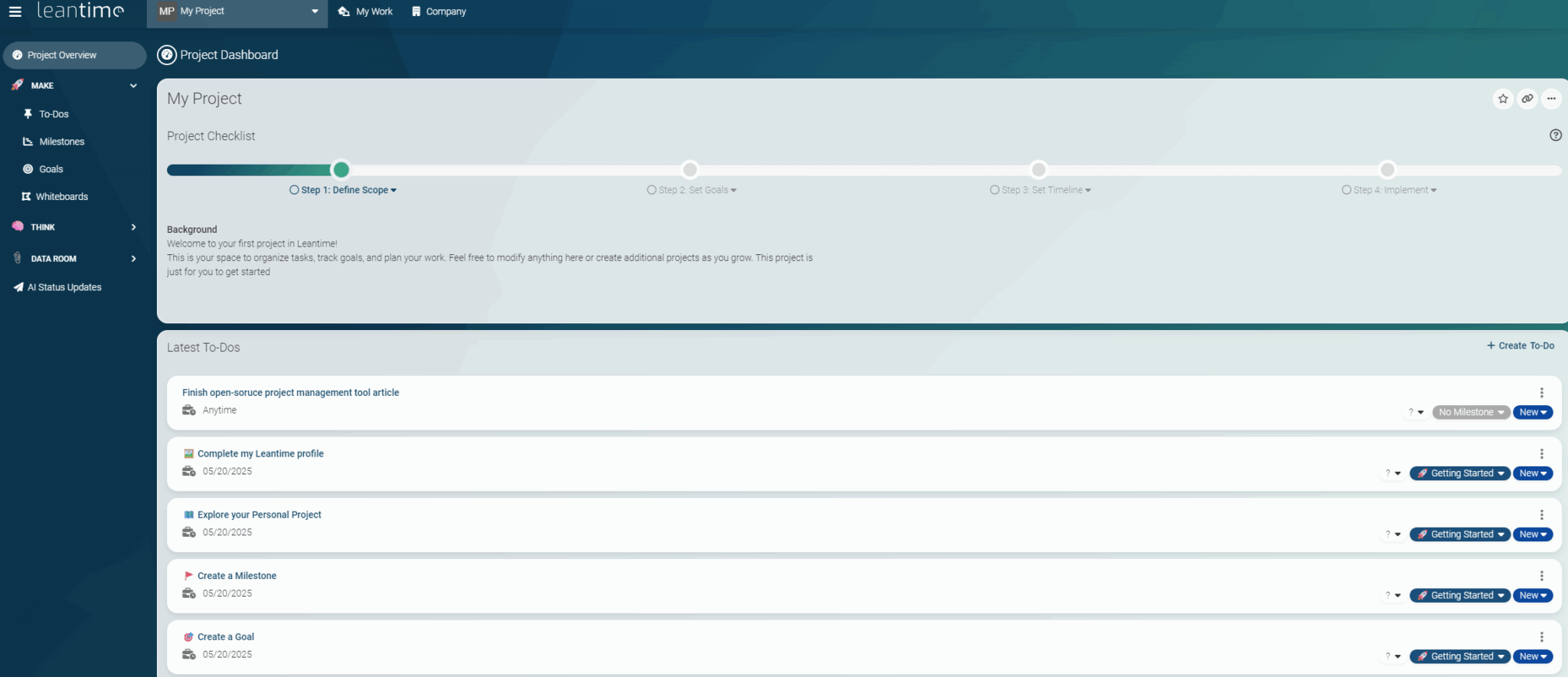
However, as it fulfills a specific use case, Leantime cons include:
- Fewer integrations compared to other providers
- Customizations are mostly visual rather than functional
- Lacks team management tools
- Community edition requires technical skills
Leantime Pricing
Leantime pricing starts at $10 per month. The basic plan has every feature, including AI-powered task management.
All plans come with a 14-day free trial.
9. Plane
Plane is yet another open-source project management tool. It gives teams a way to handle tasks without the need to rely on complex configurations.
Like most modern project management tools, Plane comes with AI to help brainstorm ideas, assign work, or help create work calendars.
Additionally, Plane is easy to use with the option to host on the cloud or self-hosted.
For teams, Plane brings cycles, an improvised way to deal with work. It removes traditional sprints with features like active cycles, progress charts, bulk-add, auto-transfers, cycle drafts, and more.
Plane offers multiple features that can help you manage projects. These include:
- Excellent cycle concept to keep teams focused on work.
- Offers customized views to help find items easily
- Modern dashboard with ease of use and visibility
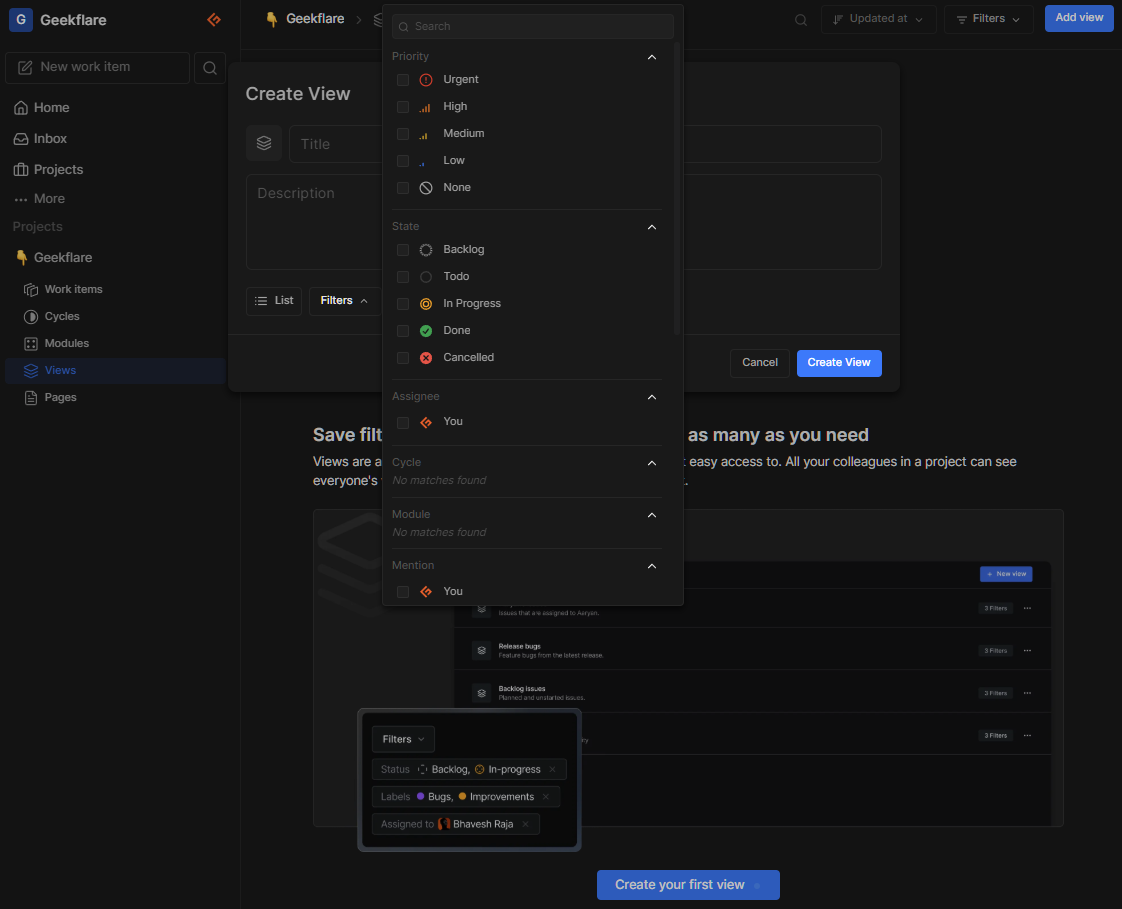
Plane limitations:
- Features focused on software development projects
- The self-hosted version doesn’t allow custom fields
- GitHub Enterprise isn’t supported
Plane Pricing
Plane paid plans start at $7 per seat per month. It offers everything for free, plus custom work items, work templates, cycle reports, and more.
Other Open-Source Project Management Software Worth Checking
Apart from the above 9 open-source project management software, I found these 3 to be worth considering:
- Wekan: Wekan is a kanban-style open-source project management solution. It is available under the MIT License (MIT). Wekan can be installed on-premise using a Linux bundle, Docker, Kubernetes, or Windows. It also offers JavaScript or desktop solutions.
- ZenTao: ZenTao is an all-in-one project management solution. It is enterprise-ready and open-source. Some of its core features include objective alignment, team collaboration, time tracking, and more.
- Tuleap: Tuleap is an agile-ready project management solution. The solution supports Kanban, Scrum, and other views for proper project management.
Key Takeaways
- Open-source project management tools offer full control and customization. Unlike SaaS platforms, tools like OpenProject and ERPNext provide complete data ownership, flexibility in deployment (cloud or self-hosted), and extensibility for teams with technical skills.
- Solutions such as Redmine or FocalBoard may require setup expertise or come with steep learning curves, making them less ideal for non-technical users or small teams without IT support.
- There’s an open-source tool for nearly every need or workflow. From agile-focused platforms like Taiga and Plane to modular ERPs like Odoo, the open-source ecosystem supports Kanban, Gantt charts, time tracking, integrations, and role-based permissions.
-
 EditorUsha, the editor-in-chief of Geekflare, is a tech-savvy and experienced marketer with a Master’s degree in Computer Applications. She has over a decade of experience in the tech industry, starting as a software engineer and then moving into digital marketing and team management.
EditorUsha, the editor-in-chief of Geekflare, is a tech-savvy and experienced marketer with a Master’s degree in Computer Applications. She has over a decade of experience in the tech industry, starting as a software engineer and then moving into digital marketing and team management.


